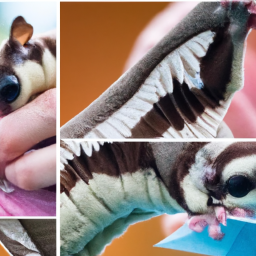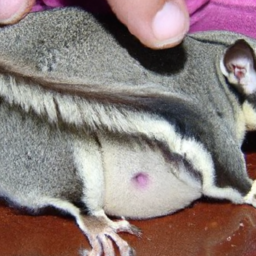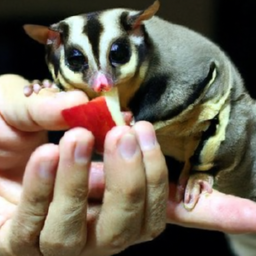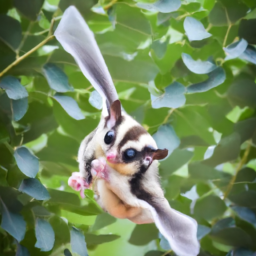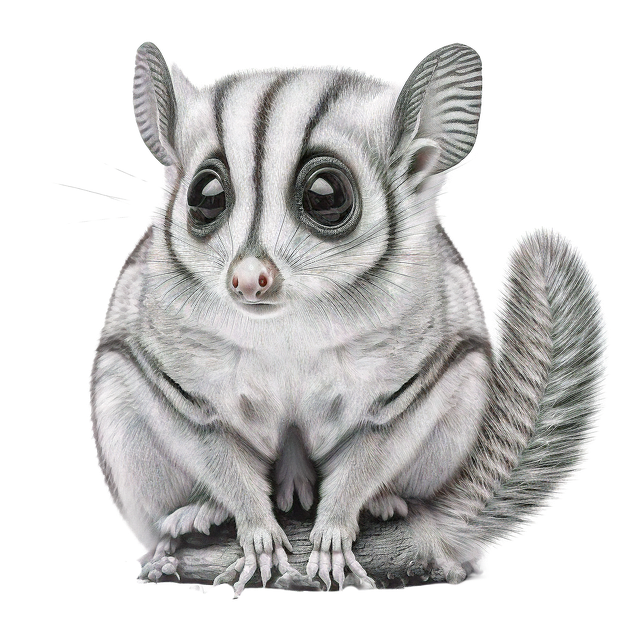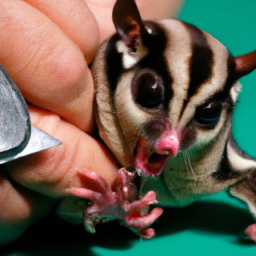How Long Can A Sugar Glider Go Without Food
Hey there! In this article, we’ll be discussing how long a sugar glider can go without food. We’ll cover everything from their natural diet to their metabolism and explore just how these adorable little creatures can survive without food for extended periods. So, if you’re curious about the eating habits of sugar gliders and want to understand their amazing survival skills, stick around and read on!
Introduction
Welcome to the world of sugar gliders! These adorable creatures are fascinating to observe and care for, but have you ever wondered how long they can survive without food? In this article, we will delve into the topic of how long sugar gliders can go without food, exploring their unique survival adaptations, food sources, signs of starvation, health risks, prevention strategies, and caring for starving sugar gliders. So, let’s get started!
Understanding Sugar Gliders
What is a sugar glider?
A sugar glider (Petaurus breviceps) is a small, nocturnal marsupial native to Australia, New Guinea, and Indonesia. With their large, expressive eyes and gliding membrane, these inquisitive creatures have captured the hearts of many exotic pet enthusiasts. Sugar gliders are social animals that live in family groups, usually consisting of a breeding pair and their offspring.
Habitat and diet of a sugar glider
In the wild, sugar gliders dwell in forested areas, preferring eucalyptus and acacia forests as their natural habitat. Their diet mainly comprises of nectar, sap, and fruits, along with insects, small vertebrates, and even bird eggs. This diet provides them with the necessary nutrients and energy to glide through the trees, as well as maintain their overall health.
Unique characteristics of sugar gliders
Sugar gliders have a few distinct characteristics that contribute to their survival in the wild. One such adaptation is their gliding ability. With the help of a patagium, a flap of loose skin stretching from their wrists to their ankles, sugar gliders can glide effortlessly through the air, allowing them to reach food sources and escape predators.
Survival Adaptations of Sugar Gliders
Sugar gliders’ ability to conserve energy
During periods of food scarcity, sugar gliders have the remarkable ability to lower their metabolic rate, entering into a state of torpor. Torpor is a temporary hibernation-like state where the body’s functions slow down, allowing the animal to conserve energy. This adaptation helps sugar gliders survive longer periods without consuming food.
How sugar gliders cope with scarcity of food
In the wild, sugar gliders rely on their keen senses to locate food sources. They also have an excellent memory for the locations of these food sources, which enables them to navigate efficiently. Additionally, sugar gliders have the ability to store excess food in special body cavities, providing them with reserves during times of scarcity.
Behavioral adaptations during food scarcity
When faced with food scarcity, sugar gliders exhibit various behavioral adaptations to increase their chances of survival. They become more active during the night, searching for food sources and expanding their territory. Sugar gliders may also form foraging groups, leveraging the collective effort to find sufficient food resources.
Food Sources for Sugar Gliders
Primary food sources in the wild
In their natural habitat, sugar gliders primarily rely on the sweet nectar and sap of various tree species, such as eucalyptus and acacia. Additionally, they consume a variety of fruits, including figs and sapodillas. These food sources provide the necessary carbohydrates, proteins, and fats to meet their nutritional needs.
Supplementing a sugar glider’s diet in captivity
In captivity, replicating a sugar glider’s natural diet can be challenging. Along with a balanced mixture of fruits and vegetables, it is crucial to provide a protein source, such as mealworms or crickets. Additionally, specialized pellet diets formulated specifically for sugar gliders may be offered to ensure optimal nutrition.
Nutritional requirements for sugar gliders
Sugar gliders have specific nutritional requirements to maintain their health and well-being. They require a high-protein diet consisting of approximately 25-30% protein, along with moderate fat and low fiber intake. Calcium supplementation is also essential to prevent metabolic bone disease.
Duration of Survival Without Food
Factors affecting the duration without food
The duration a sugar glider can survive without food depends on various factors, including its overall health, age, and environmental conditions. An unhealthy glider or one with underlying medical conditions may not withstand prolonged periods of food deprivation as well as a healthy individual.
General timeframe for a sugar glider without food
On average, a sugar glider can survive without food for approximately 2-3 days. However, this timeframe can vary depending on the factors mentioned earlier. The survival duration is extended further when sugar gliders enter torpor, during which their metabolic rate decreases, requiring less energy for survival.
Survival mechanisms in extreme conditions
In extreme conditions, such as drought or other natural disasters, sugar gliders have been known to survive for longer periods without food. This ability to withstand food scarcity is attributed to their adaptations, including torpor and the storage of excess food reserves.
Signs of Starvation in Sugar Gliders
Physical symptoms of starvation
When a sugar glider is deprived of food for an extended period, several physical symptoms may become evident. These include weight loss, lethargy, muscle wasting, and dehydration. Their usually glossy fur may become dull, and their overall body condition deteriorates.
Behavioral changes during prolonged food deprivation
Prolonged food deprivation can also lead to behavioral changes in sugar gliders. They may become more irritable, exhibit aggressive behavior, and lose interest in their surroundings. The once social and active gliders may withdraw and become less interactive.
Health Risks and Consequences
Impact of prolonged food deprivation on sugar gliders’ health
Prolonged food deprivation has severe consequences for sugar gliders’ health. Malnutrition can weaken their immune system, making them susceptible to various infections and diseases. It can also lead to organ failure, reduced fertility, and even death if not addressed in a timely manner.
Common diseases associated with malnutrition
Malnutrition in sugar gliders can result in various diseases, including metabolic bone disease, which occurs due to calcium deficiency. Other common conditions related to malnutrition include intestinal blockage, anemia, and compromised reproductive capabilities.
Long-term effects on reproductive capabilities
Female sugar gliders that experience prolonged food deprivation may face long-term effects on their reproductive capabilities. They may have difficulty conceiving, experience increased risk of pregnancy complications, and produce fewer offspring. Proper nutrition is crucial for maintaining their reproductive health.
Preventing Food Scarcity for Sugar Gliders
Creating a suitable environment for adequate food availability
To prevent food scarcity for sugar gliders in captivity, it is essential to create an environment that mimics their natural habitat as closely as possible. This includes providing a variety of appropriate fruits, vegetables, and protein sources. Ensuring easy access to fresh water is also crucial for their well-being.
Establishing a balanced diet plan
Consulting with a veterinarian or specialized exotic pet nutritionist is recommended for establishing a balanced diet plan for sugar gliders. This includes incorporating a combination of commercial pellet diets, fresh foods, and vitamin and mineral supplements to meet their specific nutritional requirements.
Supplementing with appropriate treats for mental stimulation
In addition to a balanced diet, sugar gliders benefit from mental stimulation provided by appropriate treats. These can include small amounts of honey, yogurt, or unsweetened applesauce, which can be used as enrichment tools to promote natural behaviors and alleviate potential boredom.
Caring for Starving Sugar Gliders
Identifying a starving sugar glider
If you suspect a sugar glider is starving, it is crucial to observe its behavior and physical condition. Look for signs of weight loss, lethargy, and changes in activity levels. Lack of appetite and unresponsiveness to external stimuli are also indicators of a starving sugar glider.
Rehabilitation and refeeding guidelines
Refeeding a starving sugar glider should be done gradually to avoid overwhelming its digestive system. Offering easily digestible, high-quality foods in small amounts multiple times a day can help restore its strength and vitality. It is important to monitor its progress closely and adjust the diet accordingly.
Seeking veterinary intervention
If a sugar glider continues to show signs of starvation despite efforts to rehabilitate and refeed it, it is crucial to seek veterinary intervention. A qualified exotic pet veterinarian can provide a comprehensive assessment, identify underlying health issues, and recommend appropriate treatment options.
Does the lifespan of a sugar glider affect how long they can go without food?
Yes, the lifespan of sugar glider does impact how long they can go without food. These small marsupials have a high metabolism and need to eat every few hours to survive. With an average lifespan of 9-12 years in captivity, their ability to withstand food deprivation is limited compared to other animals.
Conclusion
In conclusion, while sugar gliders are resilient animals with unique survival adaptations, they can only go without food for a limited period. Understanding their nutritional requirements, providing appropriate food sources, and monitoring their health are essential for ensuring their well-being. By taking proper care of these captivating creatures, we can help them thrive and enjoy their delightful company for years to come.
